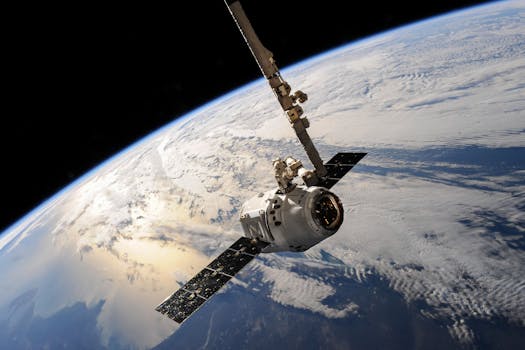The Future of Satellites: Revolutionizing Global Connectivity

The Future of Satellites: Revolutionizing Global Connectivity
The future of satellites is a rapidly evolving field, with new technologies and innovations emerging every day. As we look to the future, it’s clear that satellites will play an increasingly important role in shaping our world. From providing global connectivity to monitoring the environment, satellites are becoming an essential part of our daily lives.
Introduction to the Future of Satellites
Future of satellites is the use of artificial satellites in orbit around the Earth to provide various services such as communication, navigation, and remote sensing. Satellites have been used for decades, but recent advancements in technology have made them more accessible, affordable, and powerful. Today, satellites are used in a wide range of applications, from providing internet connectivity to remote areas to monitoring the environment and tracking weather patterns.
Advancements in Space Technology
One of the key drivers of the future of satellites is the rapid advancement of space technology. New materials, designs, and manufacturing techniques are making satellites lighter, more efficient, and more cost-effective. For example, the use of 3D printing is allowing satellite manufacturers to create complex components with greater precision and speed. Additionally, the development of new propulsion systems, such as electric propulsion, is enabling satellites to travel farther and faster than ever before.
Another significant advancement in space technology is the development of small satellites, also known as CubeSats. These tiny satellites, which are typically the size of a shoebox, are revolutionizing the satellite industry by providing a low-cost and accessible way for companies and organizations to launch their own satellites. Small satellites are being used for a wide range of applications, from providing internet connectivity to monitoring the environment and tracking weather patterns.
Applications of Satellites
Satellites have a wide range of applications, from providing global connectivity to monitoring the environment. One of the most significant applications of satellites is in the provision of internet connectivity. Satellites can provide internet access to remote and underserved areas, where traditional fiber-optic cables are not available. This is particularly important for communities in developing countries, where access to the internet can be a major challenge.
Satellites are also being used to monitor the environment and track weather patterns. For example, satellites are being used to track the movement of hurricanes and typhoons, providing critical early warning systems for communities in the path of these storms. Satellites are also being used to monitor the health of our oceans, tracking changes in ocean currents and temperature.
In addition to these applications, satellites are also being used for scientific research. Satellites are being used to study the Earth’s climate, tracking changes in temperature and atmospheric composition. Satellites are also being used to study the universe, providing insights into the formation and evolution of galaxies and stars.
Challenges and Opportunities
Despite the many opportunities presented by the future of satellites, there are also significant challenges to be addressed. One of the major challenges is the issue of space debris, which poses a significant threat to the safety of satellites and other spacecraft. Space debris is made up of old satellites, rocket parts, and other objects that are no longer in use, and it can cause significant damage to operational satellites and other spacecraft.
Another significant challenge is the issue of regulatory frameworks, which are struggling to keep pace with the rapid advancement of space technology. As the use of satellites becomes more widespread, there is a growing need for clear and consistent regulatory frameworks to govern the use of space.
Despite these challenges, the future of satellites presents many opportunities for innovation and growth. As the use of satellites becomes more widespread, we can expect to see new and exciting applications emerge. From providing global connectivity to monitoring the environment, satellites are set to play an increasingly important role in shaping our world.

